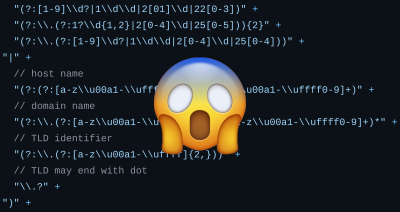
CVE-2025-53367: An exploitable out-of-bounds write in DjVuLibre
DjVuLibre has a vulnerability that could enable an attacker to gain code execution on a Linux Desktop system when the user tries to open a crafted document.

I’m a security researcher on the GitHub Security Lab team. I try to help make open source software more secure by searching for vulnerabilities and working with maintainers to get them fixed.

DjVuLibre has a vulnerability that could enable an attacker to gain code execution on a Linux Desktop system when the user tries to open a crafted document.


Repo-jacking is a specific type of supply chain attack. This blog post explains what it is, what the risk is, and what you can do to stay safe.

Using CVE-2023-43641 as an example, I’ll explain how to develop an exploit for a memory corruption vulnerability on Linux. The exploit has to bypass several mitigations to achieve code execution.

CVE-2023-43641 is a vulnerability in libcue, which can lead to code execution by downloading a file on GNOME.

Researchers from Purdue and NCSU have found a large number of command injection vulnerabilities in the workflows of projects on GitHub. Follow these four tips to keep your GitHub Actions workflows secure.

Code scanning detects ReDoS vulnerabilities automatically, but fixing them isn’t always easy. This blog post describes a 4-step strategy for fixing ReDoS bugs.

How to exploit a double-free vulnerability in Ubuntu’s accountsservice (CVE-2021-3939)

OSS-Fuzz is Google’s awesome fuzzing service for open source projects. GitHub Security Lab’s @kevinbackhouse describes enrolling a project.

The Exiv2 team tightened our security by enabling GitHub’s code scanning feature and adding custom queries tailored to the Exiv2 code base.

When you’re fixing a bug, especially a security vulnerability, you should add a regression test, fix the bug, and find & fix variants.

This blog post is the first in a series about hardening the security of the Exiv2 project. My goal is to share tips that will help you harden the security of your own project.

polkit is a system service installed by default on many Linux distributions. It’s used by systemd, so any Linux distribution that uses systemd also uses polkit.

Ubuntu 20.04 local privilege escalation using vulnerabilities in gdm3 and accountsservice (CVE-2020-16125, CVE-2020-16126, CVE-2020-16127)

This is the fourth and final post in a series about Ubuntu’s crash reporting system. We’ll review CVE-2019-11484, a vulnerability in whoopsie which enables a local attacker to get a shell as the whoopsie user, thereby gaining the ability to read any crash report.

This is the third post in a series about Ubuntu’s crash reporting system. We’ll review CVE-2019-15790, a vulnerability in apport that enables a local attacker to obtain the ASLR offsets for any process they can start (or restart).

This is the second post in our series about Ubuntu’s crash reporting system. We’ll review CVE-2019-7307, a TOCTOU vulnerability that enables a local attacker to include the contents of any file on the system in a crash report.